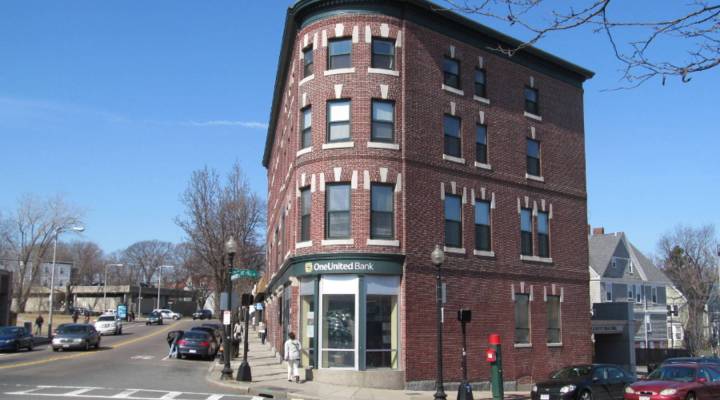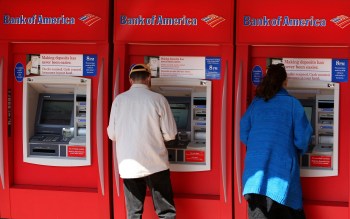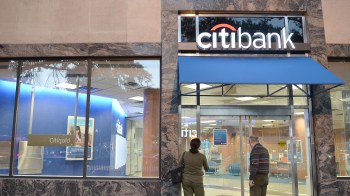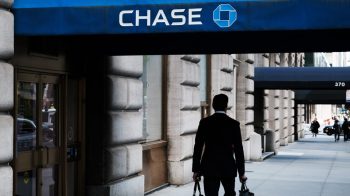
The Bank Black movement gains traction

Last July, Teri Williams was out of the office, helping her daughter move into a new apartment, when she started getting frantic phone calls. Williams is the president of Boston-based OneUnited Bank, the largest black-owned bank in the country, with $650 million in assets. Her employees were calling to tell her that people were swarming the bank.
“They were coming into the branches,” Williams said. “They were lined up outside the branches. They were calling.”
The bank had gone from opening about 50 accounts a day to 1,000.
The sudden surge of interest stemmed from a call out to the community. Earlier that week, two black men, Philando Castile in Minnesota and Alton Sterling in Louisiana, had been shot and killed by police. Soon after, the rapper Killer Mike appeared on TV and on radio stations like Hot 107.9 in Atlanta, urging people to move their money to black-owned banks like Atlanta’s Citizen’s Trust Bank.
“You can go to your bank tomorrow, and you can say, ‘Until you, as a corporation, start to speak on our behalf, I want all my money,’” he said. “‘And I’m taking all my money to Citizen’s Trust.’”
This was the birth of the Bank Black movement, a campaign spread via social media, that asks people to move their money to banks that are owned by black people or have traditionally served that community. Since July 2016, advocates estimate people have moved more than $60 million to black banks.
Michael Grant, president of the National Bankers Association, a trade group for minority-owned banks, said the movement was a result of people wanting to do something in response to the shootings.
“They wanted to do something constructive,” Grant said. “And somehow, somewhere, they got the notion, ‘Well, maybe if we would build up our institutions, and specifically our banks, maybe if we start putting money in our own community and creating more opportunities and more jobs, people would not be feeling so frustrated and so helpless.’”
Black banks have been around since after the Civil War. During the civil rights movement, Martin Luther King Jr. called upon the black community to transfer money into them. But facing competition and other pressures, the banks have dwindled. In 2001, there were nearly 50. Today, there are 23, most with fewer than $400 million in assets.
The message of the Bank Black movement is that people should invest in these banks, that they serve the black community in ways other banks don’t.
Black banks “are more likely to seriously consider financing requests from African-Americans than other banks are,” said William Michael Cunningham, adviser at CreativeInvest.com, a research firm focusing on impact investing.
A recent study from the Federal Deposit Insurance Corporation showed that in 2011, black banks made nearly 67 percent of their mortgage loans to black borrowers. Community banks that aren’t run by minorities made fewer than 1 percent of their loans to black people.
Black banks also support black institutions. OneUnited, for example, is partnering with Black Lives Matter to help the group raise money.
Justin Garrett Moore was one of the people inspired by the call to action last summer. He moved his savings to multiple black banks and helped create a group called Bank Black USA that aims to bolster the banks and their work, and to start by “[putting] a floor underneath some of these institutions’ decline,” he said.
To do that, he and the group’s 20 other members are trying to make it easier for people to move their money. The group created a Google spreadsheet with information about the largest black banks in the U.S. It includes each bank’s location, size, number of ATMs, interest rates, as well as data on the bank’s health and what it does with its money.
“It could be how much of the money are they actually lending to minority people? How much of their financial services bank branches are located in minority communities?” he said.
For the movement to have the intended effect, consumers will have to hold their banks accountable in this way, said Cunningham, from CreativeInvest.com.
“Just moving your money won’t do it, he said. “You actually have to stay engaged, and you have to stay involved with the black bank that is the recipient of your funds.”
As for OneUnited, in just the second half of last year, it brought in more than $20 million in deposits. Williams, the bank president, attributed the increase entirely to the Bank Black movement and said that money is allowing the bank to make more loans to the community.
There’s a lot happening in the world. Through it all, Marketplace is here for you.
You rely on Marketplace to break down the world’s events and tell you how it affects you in a fact-based, approachable way. We rely on your financial support to keep making that possible.
Your donation today powers the independent journalism that you rely on. For just $5/month, you can help sustain Marketplace so we can keep reporting on the things that matter to you.


















